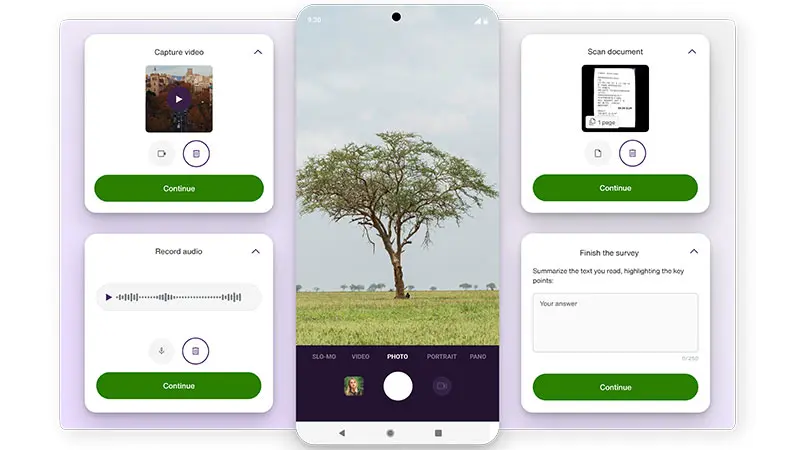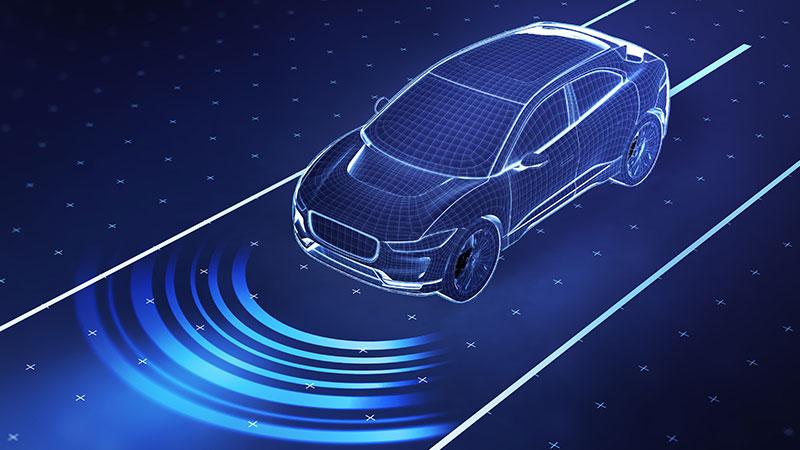Video data collection: Best practices, applications and use cases

Video data collection is critical to training AI models to perceive and interpret the environments around them, enabling capabilities like motion detection, facial recognition, object tracking, scene recognition and more. In fact, video data is so critical to the advancement of AI models, it accounted for more than 40% of revenue share of the $3.77 billion global data collection market in 2024, according to Grand View Research.
Read on for a practical guide on video data collection, including best practices, overcoming challenges and specific use cases.
What is video data collection?
Video data collection is the process of gathering video recordings for training and testing AI and machine learning models. It’s done using a variety of cameras such as smartphones, video equipment, surveillance devices and car dash cams. The datasets include clips of people, objects, environments — whatever is relevant to the task for which the model is being trained. For example, a video dataset that’s being used to train an autonomous vehicle (AV) might include clips of people and any inanimate objects (other vehicles, traffic signs or barriers) found on the road.
Why is video data collection important for machine learning?
AI systems that can process and interpret visual information found in the real world are trained using both image and video data. However, videos provide multidimensional information — for example, how people, objects and scenes change over time — that allows AI models to learn complex patterns and behaviors, something that can’t be achieved using imagery alone. This is critical for the development of computer vision applications that aim to replicate humans’ ability of sight and our capability to interpret visual information.
Advancing computer vision with video data collection
The advancement of computer vision — a specialized field of AI that enables machines to understand visual information — is critical to a multitude of industries.
One prime example is the automotive industry, where video data plays an essential role in training autonomous vehicles to recognize and detect objects, like other vehicles, pedestrians, obstacles and traffic signs, in real time. It’s also used to help AVs comprehend how objects move and behave over time, critical for planning safe navigation routes, anticipating potential hazards and more. Being trained on video data helps AVs learn to recognize lane markings, road edges and overall road structure, which is critical to their ability to maintain proper positioning and navigation. It also serves to train these vehicles to handle unexpected situations by being able to identify rare or unusual driving scenarios.
Beyond AVs, computer vision is revolutionizing diagnostic imagery in healthcare, quality control in manufacturing, yield prediction in agriculture, self-checkout systems in retail, performance analysis in sports and fitness and so much more. The use of video data to train AI and machine learning models to interpret and interact with their environment has had a monumental impact across a wide variety of industries.
How is video data collected?
There are several ways to collect video data, each of which varies in complexity. The method chosen will be influenced by the specific use case, quality requirements and the intended AI application. As is the case with any data used to train an AI or machine learning model, the higher the data quality, the better the model output.

The essential guide to AI training data
Discover best practices for the sourcing, labeling and analyzing of training data from TELUS Digital, a leading provider of AI data solutions.
Crowdsourcing
Since vast amounts of data are required to train AI and machine learning models, a common collection strategy is crowdsourcing. With this method, a large group of participants, who typically receive remuneration for their efforts, record clips and upload them to a data collection platform. Crowdsourcing is often the most efficient way of collecting the required data and can be quite cost-effective. It’s also well suited when a great variety of conditions, such as differing environments, format types, demographics and languages, must be met. For example, TELUS Digital leveraged our AI Community to conduct a video data collection project involving thousands of passenger pick-ups, drop-offs and parcel deliveries within Los Angeles. The task required hundreds of drivers who used our cutting-edge, intuitive data collection mobile app to easily upload and submit their video data files.
A demonstration of the video data collection process on the TELUS Digital AI data collection app.Onsite moderated collection
With this method, onsite moderators oversee the recordings under controlled conditions such as in a recording studio or, depending on the sensitivity of the project, in a secure facility. This type of collection provides control over the environment, including everything from site security to lighting conditions and background noise, and also ensures predictability.
TELUS Digital undertook an in-studio video collection project for a social media giant that required participants to make a variety of facial expressions in very specific lighting conditions. This was a vast project that spanned five U.S. cities and required 3,000 hired individuals who were carefully selected to show a diversity in age, gender and race. The resulting video datasets were used to successfully train the client’s deepfake detection algorithm.
Field operations
This method is an option when the collection project involves gathering video data in complex environments. Often, many logistics need to be handled in order to do so, including sourcing and managing the workforce, securing the recording venues, data management and quality assurance. For example, TELUS Digital collected 200,000 km of sensor fusion data — including video recordings — in the U.S., Japan, Taiwan and South Korea. The project involved elaborate requirements, including procuring vehicles, sourcing drivers, planning routes and scenarios and ensuring proper data transfer and management. The resulting data was used to successfully train advanced driver assistance systems.
Automation
This method involves getting video data from online sources like social media platforms, video platforms and other websites via web scraping, in which case bots are used to obtain the required data. For automation cases, it’s important to set parameters for the recordings so that the scraper bot gathers only the required, relevant data from the web.
Regardless of the collection method chosen, gathering high-quality video data can be a complex endeavor. There are a number of potential roadblocks to be aware of that can stall the AI model training process.
Overcoming video data collection challenges
Collecting vast amounts of high-quality video data requires both strategies and technological resources to manage the data effectively. The main challenges with video data collection include the following.
Privacy and legal concerns
When collecting any type of data, there are always ethical concerns to consider and regulations to follow. In the European Union, for example, the use of video containing images of people is regulated under the General Data Protection Regulation (GDPR) in order to prevent the abuse of personal data. This is particularly relevant when using an automated method such as web scraping and when conducting field operations.
Aside from complying with laws and regulations, other ways to overcome privacy and legal concerns in video data collection include:
- Obtaining informed consent
- Collecting only data that is absolutely necessary and limiting the amount of time its retained
- Using anonymization techniques such as removing personally identifiable information
- Ensuring the data transmission and storage are secure by using encryption, digital signatures and watermarking
Following these steps can help ensure both ethical and regulatory guidelines are adhered to.
Bias
Bias occurs when the data your model is trained on doesn’t accurately represent the conditions in which your model operates. In training data, bias can come in several forms. Some examples include selection bias, in which case the dataset does not reflect the realities of the environment in which the model will be used. There’s also exclusion bias, where valuable data that’s thought to be unimportant is deleted, usually at the data preprocessing stage. Further, racial bias occurs when the data skews in favor of particular groups.
Training your model using data that is biased can result in model output that is less accurate or even erroneous. A study conducted by researchers at George Tech found that object-detection systems performed worse at identifying individuals with darker skin tones. This was due to the models being trained on datasets predominantly made up of people who displayed light skin tones. In autonomous vehicle technology, this type of biased system could prove fatal to pedestrians.
To avoid bias from infiltrating your AI model, it’s imperative to collect diverse video data that’s reflective of the population as a whole. At TELUS Digital, our AI Community of more than one million includes diverse age groups, ethnicities, languages, locations and an almost equal split between the number of males and females.
A diverse data source can be coupled with additional methods such as enlisting outside domain experts to review collected video data for bias that may have been overlooked. It’s also important to regularly analyze your data to keep track of problem areas. Doing so will help to ensure you can resolve any issues quickly. Further, be sure to make bias testing a critical part of your development cycle.
Data quality
Collecting consistently high quality video data can be extremely challenging, given the volume that’s typically required to train AI models. A high-quality dataset is defined as being uniform, consistent, comprehensive, relevant to your model’s use case and diverse. While crowdsourcing can make getting the data easier, there are a host of considerations that can affect the quality of the recordings. For example, the devices used, often smartphones, can vary in resolution quality. Also, differing lighting conditions in which filming is done can impact video quality. Further, during file transmission, bandwidth limitations can impact the quality of the recordings. Given these challenges and more, it can be difficult to maintain a consistent quality level in the data.
Adhering to rigorous quality control measures can help overcome these issues. At TELUS Digital, we ensure quality at every step of the collection process by employing automated data validation and human oversight to guarantee the accuracy and integrity of the data. In our crowdsourcing, we carefully screen individuals in order to ensure high quality throughput from our AI Community. This includes ensuring each individual is using only one account and that there’s no misuse of that account, including unauthorized transfers. It also involves screening for identification abuse or impersonation, including falsifying credentials or location. With regards to our data collection app, individuals, and their devices, are granted least-privilege access to ensure they have only the minimum permissions necessary to complete their tasks or roles.
While no collection project is without its challenges, they can be made easier by adhering to a set of predetermined guidelines. These can help to positively impact the efficiency and effectiveness of the collection process.
Video data collection best practices
Following specified standards can help to ensure the collected data is of high quality for training your model. This will further help to increase the accuracy of the model’s output. Consider the following best practices for video data collection.
Establish metrics
A number of metrics can be used to measure data quality. Some of these include assessing the degree to which the data represents the model’s target audience, the completeness and consistency of the data, how up-to-date the data is, whether duplicate or redundant data is found in the dataset and more.
Consider ethical and legal regulations
Throughout the collection process, it’s important to ensure privacy regulations, such as GDPR, are adhered to. You’ll also need to obtain consent for collecting the video data and consider the ethical implications of using the obtained data.
At TELUS Digital, our data collection protocols include gathering informed consent, adhering to strict privacy compliance, secure device management, scrubbing for any personally identifiable information and obtaining locations permissions.
Establish quality assurance processes
The goal of quality assurance is to ensure your model performs at the highest level of accuracy possible. This begins with making sure your training dataset reflects the real-world environment in which the model will be used. It’s also crucial that the dataset is complete, clean and annotated. This is accomplished through rigorous data quality checks, ensuring consistency in video formats and resolutions, validating the accuracy and relevance of the data and regularly reviewing and updating collection methods.
Maintain good data management practices
Managing vast amounts of data is no small feat. Ensuring the data is consistent, accessible and secure starts with a sound data management strategy to determine your data protection, collection and sharing policies. This will also help to confirm the data complies with applicable data protection regulations. Some of these practices include implementing encryption for data storage and transfer, enforcing network security controls such as using virtual private networks, regularly monitoring network traffic, conducting regular penetration tests to identify and address vulnerabilities in your network infrastructure, regularly updating security protocols and more. For example, with the GDPR-compliant TELUS Digital AI data collection app, we have prioritized data security and protection using fraud prevention techniques, secure data transfer to TELUS Digital servers and restricted access.
Adhering to these best practices helps to improve the quality of the data collected by ensuring it’s consistent, complete, accurate and diverse. Ultimately, this will lead to better AI model performance overall.
Advance your AI models with the power of high-quality data
Training your AI or machine learning model using high-quality video data is critical for increasing the accuracy of its output. At TELUS Digital, we help you to improve your models with exceptional training data. Our global, diverse, on-demand workforce is capable of accommodating any nuance, complexity or scale of any AI project, and our AI app enables seamless data collection and robust quality assurance. Connect with our experts today to explore how we can help you build better AI models.



